DAVID MEDALLA E ADAM NANKERVIS – BARO GALERIA, SAO PAULO | BRAZIL
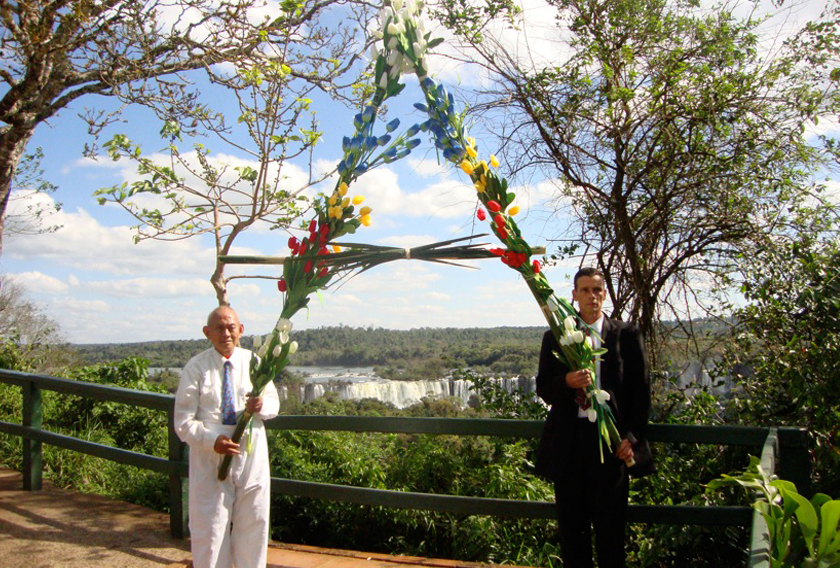
David Medalla e Adam Nankervis // The Secret History of Mondrian Fanclub – Part 3: So Pulo
curated by Maria Baro and Adriano Casanova
Baró Galeria
Barra Funda, 216 | São Paulo Brasil
18/09/2010 a 20/11/2010
http://barogaleria.com/exposicao/david-medalla-e-adam-nankervis-the-secret-history-of-mondrian-fanclub-part-3-so-pulo-uma-homenagem-a-helio-oiticica-lygia-pape-e-lygia-clark/
A Baró Galeria recebe a primeira exposição de David Medalla e Adam Nankervis no Brasil. A dupla homenageará Hélio Oiticica, Lygia Clark e Lygia Pape na individual “The Secret History of Mondrian Fanclub – Part 3: SO PULO”.
O conceito do The Secret History of Mondrian Fanclub foi colocado em prática em 1994 em Manhattan (EUA). No ano seguinte, foi a vez de Londres receber “The Secret History of the Mondrian Fan Club II, Mondrian in London”. O registro fotográfico e de vídeo desses e outros projetos de Medalla e Nankervis também estará na Baró Galeria. A mostra terá ainda as características esculturas de neon de Medalla e uma série de aquarelas feitas especialmente para a exposição.
Medalla é um dos pioneiros das artes cinética e participativa, da land art e da live art. Ele já apresentou seus trabalhos na Tate Modern (Inglaterra), no New Museum of Contemporary Art (EUA), no Centre Pompidou (França) e na DOCUMENTA de Kassel (Alemanha).
Nankervis expõe internacionalmente há 20 anos e esteve nas bienais de Los Angeles (EUA), Joanesburgo (África do Sul) e Liverpool (Inglaterra). Ele realiza seus projetos, principalmente, em colaboração com outros artistas como Derek Jarman, David Hockney, Peter Tulley e com o próprio Medalla. O australiano também é o fundador do MuseumMAN.
“Embora fosse uma planta estrangeira, quando foi importada pela primeira vez para Holanda, a tulipa tornou-se, eventualmente, a flor simbólica da Holanda. Visitantes do estudio do Piet Mondrian de Paris, nos anos 1920 e 1930 notaram uma tulipa artificial solitária em seu quarto.
Charlotte von Wiegand descreveu a tulipa artificial como tendo pétalas pintadas de branco.
O fotógrafo húngaro Andre Kertz tirou uma foto da tulipa de Mondrian mas ninguém deixou uma descrição sobre se a tulipa artificial havia sido feita de papel machê, tecido, bakelite ou mandeira.
Gosto de imaginar Mondrian pintando sua tulipa solitária com cores primárias conforme as mudança de estações: amarelo na primavera, vermelho no verão, azul no outono e branco no inverno.
Mondrian pintava muitas outras flores. Ele sobreviveu como artista vendendo suas pinturas de flores.
Dentre tantas flores que o artista holandes pintou estava a crisântemo. Quando Adam Nankervis e eu visitamos a sepultura do Mondrian no cemitério Cypress Hill no Brookling, Nova York, em 1993, pouco depois de termos fundado o Mondrian Fan club, trouxemos flores cristânemo e deixamo-as em sua simples tumba.
Em nosso caminho para o cemitério Cypress Hill, Adam Nankervis e eu colocamos em prática nosso primeiro ‘Global Graffiti”: a letra ‘M’ escrita com fumaça branca no céu azul sobre Manhattan. A letra ‘M’ representava a letra incial do nome do Mondrian, e também a de Manhattan onde Mondrian passou os últimos dias de sua vida.
Em seus primeiros dias em Paris, Mondrian tentou incorporar em um dos desenhos, uma letra – uma imitação da prática de Picasso e Braque, que escreveu palavras e incorporou nomes e letras em suas colagens a pinturas cubista analíticas.
A letra que Mondrian tentava desenhar era a letras “K”, a letra inicial de um anúncio para uma sopa instantânea em forma cúbica. A propaganda foi feita numa parede de tijolo numa rua em frente a sala onde Mondrian morou em Montparnasse. Ele fez um desenho sobrevivente da letra ‘K’.
Talvez porque não gostava de diagonais em letras, Mondrian nunca transformou o desenho em uma pintura.
Mondrian abandonou a letra ‘K”, provalvemente na mesma época que ele tirou um dos ‘A’ de seu sobrenome original ‘Mondriaan”.
Fico frequentemente imaginando porque Mondrian tirou a letra ‘A’ do seu nome sobrenome.
Seria talvez porque ele achava que a forma que a ortografia holandesa soletrava seu nome fosse supérfula
Fora porque Mondrian quisera dizer adeus para suas origens etnicas e se tornar um membro íntegro do mundo dos artistas da vanguardas, no qual ele se tornou quando mudou para frança.
Quando Adam Nankervis e eu visitamos São Paulo pela primera vez em 2007, pensamos em Mondrian, cuja vida e idéias insipiraram muitos artistas brasileiros, incluindo Lygia Clark, Lygia Pape and Helio Oiticica.
Nós pensamos que puderíamos imitar Mondrian tirando a letra “A” de São Paulo. Ficamos agradávelmente supresos que fazendo isso, SAO PAULO se tornaria SO PULO.
Amigos brasileiros nos disseram que SO PULO em poruguês significa ‘EU PULO’. Uma surpresa estupedamente maravilhosa para todos nossos amigos, para Adam Nankervis e a mim.
A construção da letra ‘A’ das raízes brasileiras e vinhas entrelaçadas com bulbos de tulipas da Holanda será o evento principal que Adam Nankervis e eu representaremos na nossa exposição conjunta na Galeria Baró em São Paulo em setembro de 2010.
Acompanhados por Maria Baró, Adriano Casanova e outros artistas amigos no Brasil, Adam Nankervis e eu levaremos a letra ‘A’para Fos do Iguacu em homenagem a Piet Mondrian, Lygia Clark,Lygia Pape, Helio Oiticica e à cidade e às pessoas de São Paulo.”
David Medalla*
*“Although it was a foreign plant when first imported into the Netherlands, the tulip eventually became the symbolic flower of Holland.
Visitors to the Paris studio of Piet Mondrian in the 1920s and 1930s noticed an artificial solitary tulip in his room.
Charlotte von Wiegand described the artificial tulip as having petals painted white.
The Hungarian photographer Andre Kertez took a photo of Mondrian’s arificial tulip but no one left a description of whether the artificial tulip was made of papier mache, cloth, bakelite or wood.
I like to imagine Mondrian painting his solitary tulip a different primary colour with the changes of the seasons in a given year: yellow in spring, red in summer, blue in autumn and white in winter.
Mondrian painted many other flowers. He survived as an artist by selling his paintings of flowers.
Among the many flowers that the Dutch artist painted was the chrysanthemum.
When Adam Nankervis and I visited Mondrian’s grave in the Cypress Hill cemetery in Brooklyn, New York, in 1993, shortly after we founded the Mondrian Fan Club, we brought chrysanthemum flowers and laid them on his simple tomb.
On our way to the Cypress Hill cemetery, Adam Nankervis and I enacted our first ‘Global Graffiti’: the letter ‘M’ written in white smoke in the blue sky above Manhattan. The letter ‘M’ stood for the initial of Mondrian’s name and also for Manhattan where Mondrian spent the last days of his life.
In his early days in Paris, Mondrian tried to incorporate in one of drawings a letter – in emulation of the practice of Picasso and Braque who wrote words and and incorporated names and letters in their collages and analytical cubist paintings.
The letter that Mondrian tried to draw was the letter ‘K’, the initial letter for an advertisement for an instant soup in cubic form. The advertisement was on a brick wall across the street from the room where Mondrian lived in Montparnasse. He made one surviving drawing of the letter ‘K’. Perhaps because he did not like the diagonals in that letter, Mondrian never transformed his drawing into a painting.
Mondrian abandoned the letter ‘K’ at probably the same time he dropped one of the ‘A’s in his original surname ‘Mondriaan’.
I have often wondered why Mondrian dropped one of the letter ‘A’s in his surname.
Was it perhaps because he thought the Dutch orthographic way of spelling his name was superfluous?
Was it because Mondrian wanted to say goodbye to his ethnic origin and become a full-pledged member of the world of avant-garde artists, which he became when he moved to France?
When Adam Nankervis and I first visited Sao Paulo in 2007, we thought of Mondrian, whose life and ideas inspired several Brazilian artists, including Lygia Clark, Lygia Pape and Helio Oiticica.
We thought we could emulate Mondrian by ‘dropping’ the letter ‘A’ from Sao Paulo.
We were pleasantly surprised to find that by doing so, SAO PAULO became SO PULO.
Brazilian friends told us SO PULO in Portuguese means ‘I JUMP’.
A wonderful serendipitous surprise for all our friends and for Adam Nankervis and myself.
The making of the letter ‘A’ out of Brazilian roots and vines entwined with tulip bulbs from Holland will be the main event Adam Nankervis and I will enact at our joint exhibition in Galleria Baro in Sao Paulo in September 2010.
Accompanied by Maria Baro, Adriano Casanova and other artists friends in Brazil, Adam Nankervis and I will take the letter ‘A’ to the Iguazu Falls, in homage to Piet Mondrian, Lygia Clark, Lygia Pape, Helio Oiticica, and the city and people of Sao Paulo.”
David Medalla
The first photo shows the handsome young carioca artists who participated in Medalla and Nankervis’ performance entitled ‘Arco-Iris / Rainbow Samba for Helio Oiticica’. The performance took place on September 11, 2010, 5 – 6 p.m. inside the Casa Franca – Brasil (Director: Evangelina Seiler), in Rio de Janeiro, within Helio Oiticica’s ‘Tropicalia’ installation. The Helio Oiticica exhibition was curated by Cesar Oiticica Filho and Fernando Cocchiarale. It was produced by Bruno Monnerat and Camila Goulart. Fernando Cocchiarale introduced the performance which climaxed with dancing by the audience to joyfull music by musicians from Mangueira.
The other photos were taken at the Iguazo Falls where Adam Nankervis and David Medalla enacted their live event entitled ‘Tulips for the Iguazo’ on September 14, 2010. The bamboo poles for the letter ‘A’ (festooned with silk tulips and fronds from a Brazilian palm tree) were cut by Valdemir Federizzi from the Fazenda Santa Maria of Foz de Iguazo. Brazilian artist Renata Padovan made a video of the event by Medalla and Nankervis which will be shown in the ‘So Pulo’ exhibition at Galeria Baro in Sao Paulo.

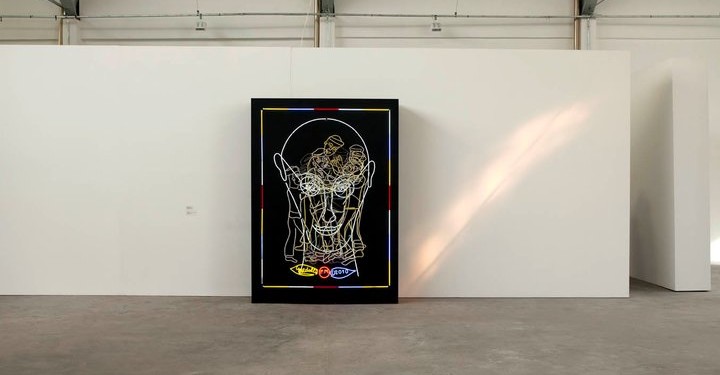
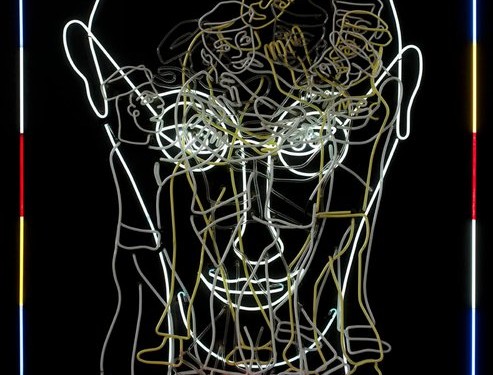
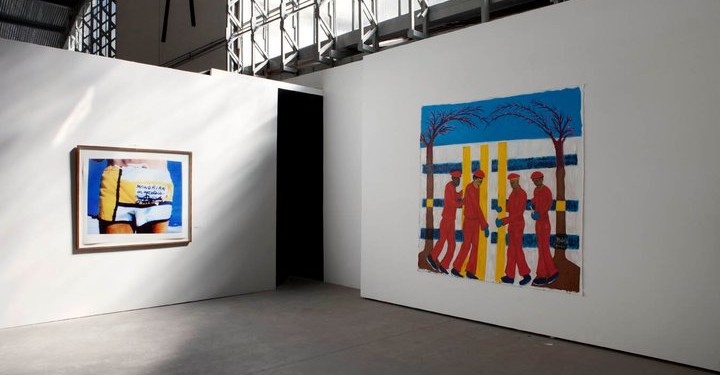
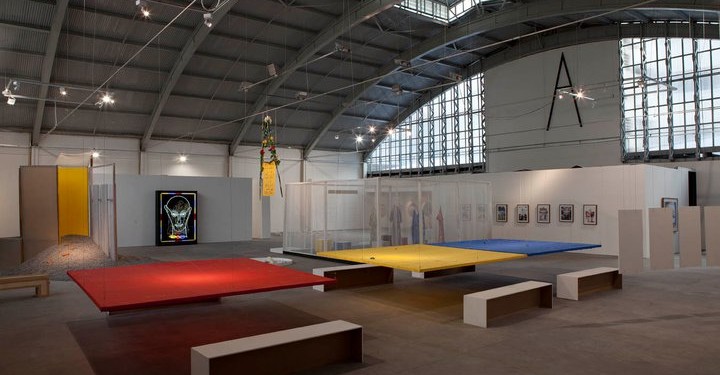
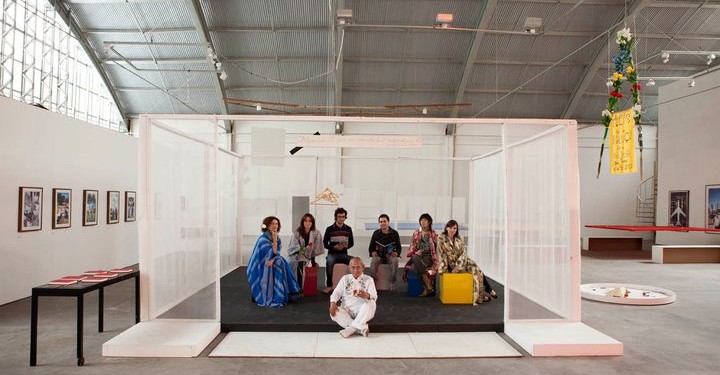
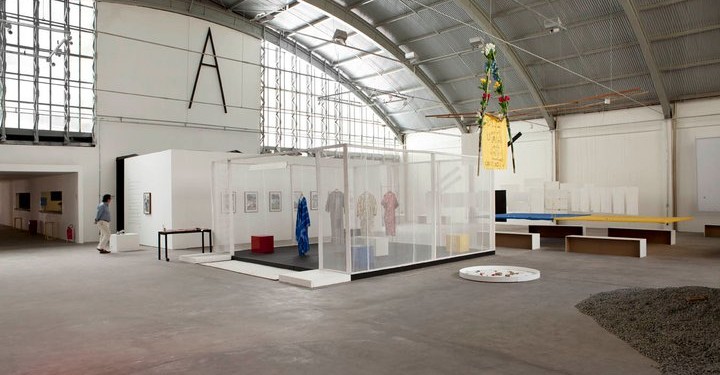
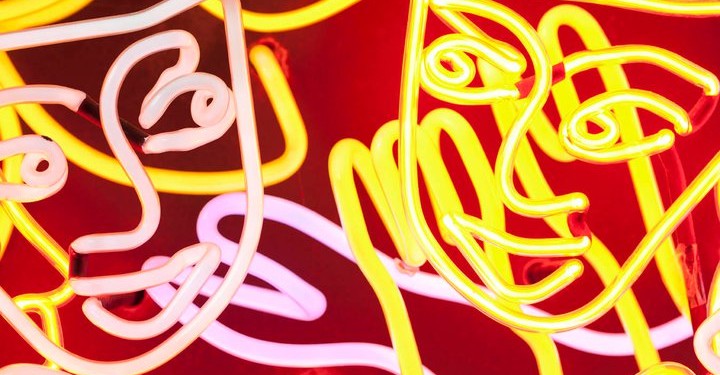
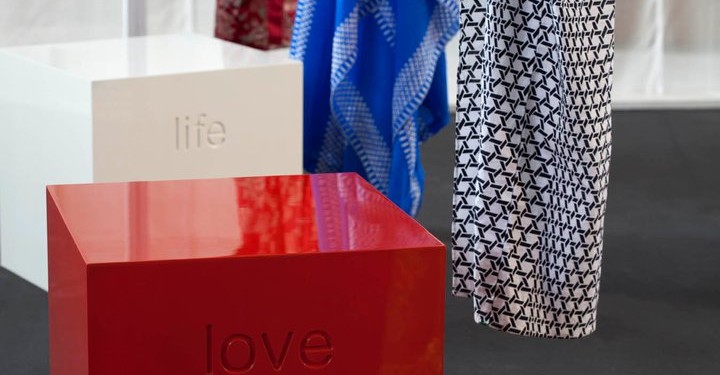
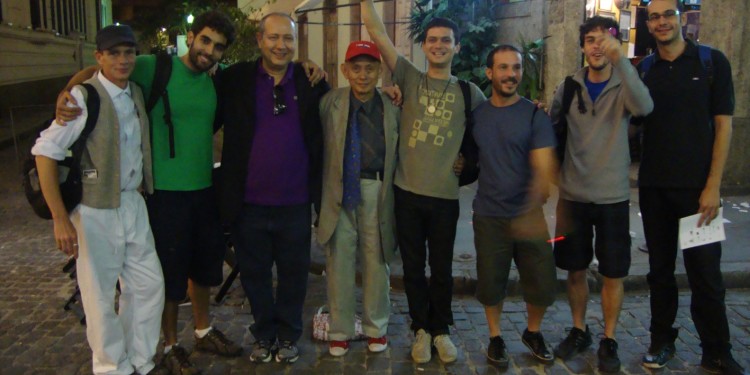

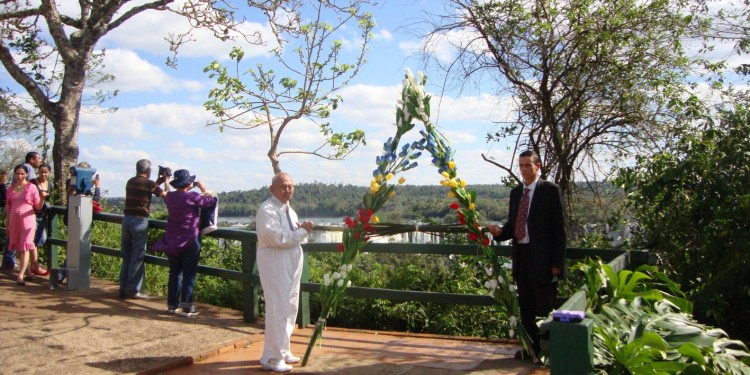
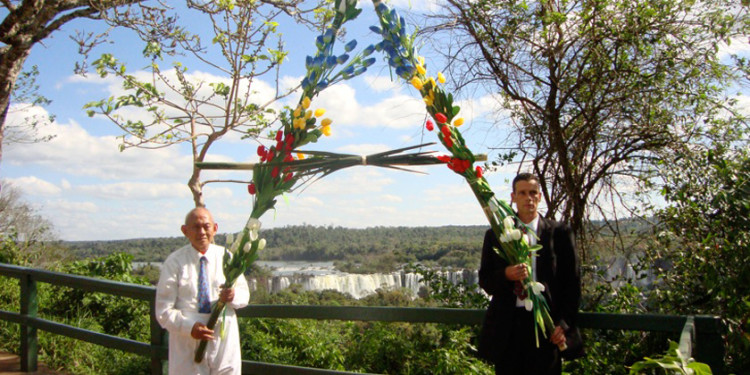
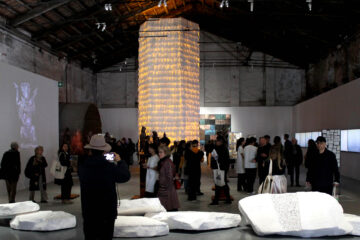
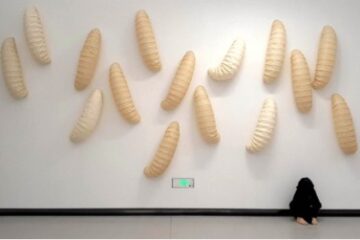
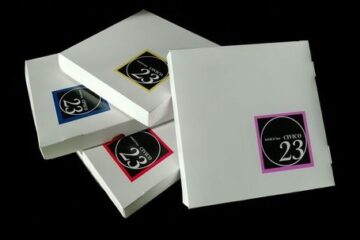
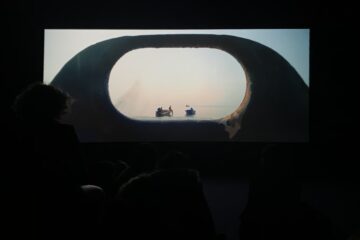

No Comment